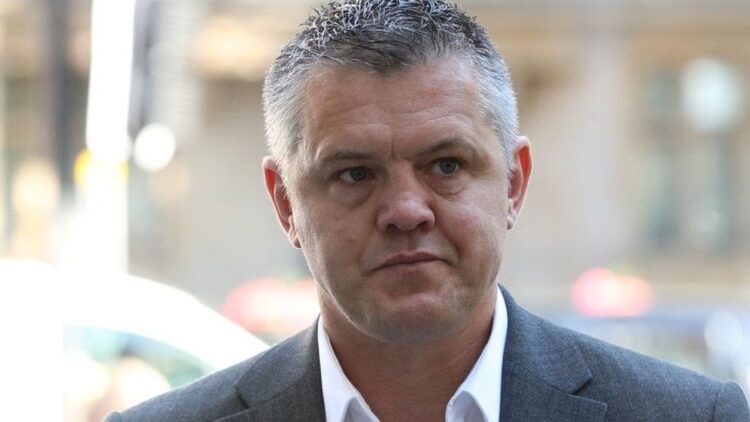By Gavin Mackintosh-
A High Court judge’s order for a retrial of Paul Bussetti who filmed a video of a cardboard model of Grenfell Tower being burned on a bonfire, is significant and sets a remarkable precedent in cases where a defendant posts offensive effige on social media, and will also have to pay the CPS’s costs of £6,095 within 28 days.
Bussett posted a video of a carboard model of Grenfell tower being set alight by a laughing crowd has prompted outrage, condemnation and some difficult questions.
Bussetti, then 47, was found not guilty for the offence at a Magistrates Court, after a two-day trial at Westminster Magistrates’ Court in August 2019.
However , in a judgment over the weekend, a High Court quashed Bussetti’s acquittal, and ordered a retrial after the Crown Prosecution Service (CPS) brought an appeal, after criticizing the misjudgment of the then Magistrates judge, now a High Court judge.
Busetti was accused of posting a “grossly offensive” video on WhatsApp in November 2018, prompting widespread outrage. South Norwood neighbours who know Bussetti and his small group of mates were moved to stage an anti-racism march through South Norwood to express solidarity with the Grenfell victims.
The prosecution at the original trial argued the footage, in which cardboard figures burned as the model went up in flames, was racist in showing black and brown characters representing victims of the Grenfell Tower blaze, which killed 72 people in 2017.
Mr Bussetti said he shared the footage with two WhatsApp groups totalling about 20 people because one featured many of those at the party and the other had people who knew his friends.
He told the court: “It was funny. Everyone knew it was funny.”
The prosecution said the footage, showing black and brown cardboard figures inside the building and some hanging off as if falling from it, was racist in its content.
Bussetti claimed the characters were images of his associates, including a black-clad figure meant to represent a friend who did martial arts, and had been referred to as “little ninja”.
Laughter can be heard on the video, which has been played to the court, as the model burns in front of a group of about 30 people at the 3 November gathering.
Onlookers make several references to the circumstances of the disaster, calling out “stay in your flat, we are coming to get you” and “jump out the window”.
As the flames reach the figure wearing black, an unseen figure remarks: “The little ninja is getting it.”
The prosecution said the footage, showing black and brown cardboard figures inside the building and some hanging off as if falling from it, was racist in its content.
He said he had not mentioned to police during two interviews that the people in the tower were him and his friends because he was “scared” and “nervous”.
However, when he at the time voluntarily attended a station two days after the bonfire he told officers the video was “sick” and “horrible” and had no purpose.
Towards the end of the trial, Bussetti’s lawyers said a second video of the bonfire existed of which they were not previously aware, implying there was no way to know which footage had been uploaded to YouTube and gone viral.
The then chief magistrate, Emma Arbuthnot, who is now a High Court judge, said she could not be sure he had filmed the video that was widely seen – including by some directly affected by the tragedy.
But Lord Justice Bean was unimpressed and said on Friday that the trial judge should have found that the two videos of the bonfire were similar.
“It may be that the sound quality of Mr Bussetti’s video was not as good as that of the video which we have seen, if it was indeed not the same one, or the camera angle slightly different, but that is of minimal significance.
“Since it was clear for the reasons given above that Mr Bussetti’s video was substantially similar, though maybe not identical, to the one uploaded to YouTube and played in court, the chief magistrate was required to consider whether its content was grossly offensive and whether [Bussetti] intended it to be so or was aware that it was likely to be so.”
Bean, sitting with Mr Justice Dove, also rejected Bussetti’s lawyers’ argument that the prosecution’s case was only about racism.
“The question was whether Mr Bussetti had sent via WhatsApp a message which he intended to be, or which he was aware might be, grossly offensive to members of the public, in particular members of the Grenfell community, who saw it.
“Not all the victims of the Grenfell Tower disaster were from ethnic minorities, though many were.”
The judge rejected Bussetti’s argument – that the figures in the bonfire were his friends – as a defense. “Even if the trial court accepts that the cutout figures may have been intended to represent the defendant and his friends, that would not in my view provide a defense to the charge.
“A member of the Grenfell community or other reasonable member of the public, seeing a video of the effigy, would not know that the figures were intended to be anyone other than the residents of Grenfell Tower.
“There are no names attached to the cutout figures; only the name ‘Grenfell’ at the top of the effigy, which clearly depicts a tall building with people at the windows.”




